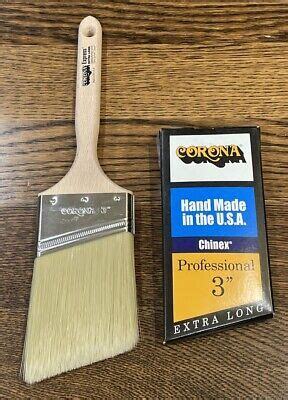How to Choose the Right Paint Brushes and Rollers

Key Features
- Versatility in Tools: Paint brushes and rollers come in a variety of materials and styles suited for specific tasks, from precise detail work to covering large areas.
- Durability and Quality: High-quality brushes and rollers last longer, provide better paint application, and save time by reducing the need for touch-ups.
- Surface-Specific Options: Tools are available for smooth, lightly textured, and rough surfaces, allowing for optimal paint application and a flawless finish.
Paint Brushes and Rollers
When it comes to achieving a professional-quality paint finish, choosing the right paint brushes and rollers is essential. The tools you use can make or break the outcome of your project—whether you're painting a small accent wall or tackling a larger job like a full exterior repaint. With so many options available, let’s break down how to select the best brushes and rollers for your next project.
Brush vs. Roller: When to Use Each
The first step in choosing the right tools is understanding when to use a paintbrush and when to use a roller. Each tool serves a distinct purpose, and using them together properly can give you that flawless, smooth finish.
- Brushes: Ideal for precision work. Use brushes on trim, edges, and areas that require detailed painting. They’re also essential for cutting in around ceilings, windows, and doors.
- Rollers: Best for covering larger areas quickly, like walls and ceilings. Rollers offer even coverage with fewer streaks, making them perfect for broad, flat surfaces.
Now that we’ve covered the basics, let’s dive into the specifics of selecting the right paint brushes and rollers.
How to Choose the Right Paint Brushes
Not all brushes are created equal. The type of brush you use will depend on the type of paint, the surface you’re painting, and the level of detail required.
1. Bristle Type: Natural vs. Synthetic
- Natural Bristle Brushes: Made from animal hair, these are best for oil-based paints because they hold and release paint smoothly.
- Synthetic Brushes: Typically made from nylon or polyester, these brushes are ideal for water-based paints like latex. They resist water absorption, maintaining their shape over time.
2. Brush Shape and Size
- Flat Brushes: Great for wide, flat areas, offering smooth, even strokes.
- Angular Brushes: Also called sash brushes, these are perfect for cutting in around corners and edges.
- Round Brushes: Ideal for detail work, like painting moldings or small areas.
The size of the brush matters too. Use smaller brushes (1-2 inches) for detail work and larger ones (3-4 inches) for broader strokes.
3. Handle Grip and Comfort
If you’re working on a long project, comfort matters. Look for brushes with ergonomic handles to avoid hand fatigue. Some higher-end brushes have rubberized grips for improved control.
Things to Know
- Use Different Tools for Different Areas: Brushes are great for edges and small spaces, while rollers are ideal for broad surfaces.
- Match the Nap to the Surface Texture: Higher naps work for rough textures like brick, while lower naps are best for smooth walls.
- Invest in Quality Tools: High-quality brushes and rollers provide better results and last longer, giving you more value over time.
How to Choose the Right Paint Rollers
Rollers are your go-to tool for covering large areas quickly, but selecting the wrong roller can lead to uneven coverage and frustration. Here's how to pick the right one.
1. Roller Nap Length
The nap refers to the thickness of the roller cover. Different surfaces require different nap lengths:
- ¼-inch nap: Best for smooth surfaces like drywall and plaster.
- ⅜- to ½-inch nap: Ideal for lightly textured surfaces, such as walls with a slight orange peel texture.
- ¾-inch nap or higher: Perfect for rough surfaces like stucco, brick, or textured ceilings.
2. Roller Material
The material of the roller cover also matters depending on the type of paint you're using.
- Foam Rollers: These are great for achieving a smooth finish with oil-based or high-gloss paints.
- Microfiber Rollers: Best for water-based paints like latex, offering smooth coverage with minimal lint.
- Lambswool Rollers: Excellent for oil-based paints on rough surfaces, providing excellent coverage.
3. Roller Frame and Handle
Choose a roller frame that fits comfortably in your hand. Some frames offer ergonomic grips or extendable handles for added convenience when working on ceilings or tall walls. Look for a sturdy metal frame—flimsy frames can bend, resulting in uneven pressure and streaks on your walls.
Choosing the Right Tools for Your Project
Knowing how to select the right paint brushes and rollers depends heavily on the specific project you’re tackling. Here are a few scenarios and the recommended tools for each:
1. Painting Walls and Ceilings
For walls and ceilings, a ⅜-inch nap roller will give you smooth, even coverage. Use an angular brush to cut in along the edges where walls meet the ceiling or trim. This combo ensures a crisp, professional finish.
2. Working with Trim and Doors
Use a flat synthetic brush for doors and trim, especially if you’re using latex paint. A smaller 1- to 2-inch brush will allow you to get into tight spaces and paint edges with precision.
3. Exterior Painting
If you’re painting rough exterior surfaces like stucco or brick, opt for a ¾-inch nap roller for even coverage. Pair it with a natural bristle brush if you're using oil-based paint for areas that require fine detailing.
In Our Experience
"In our experience, selecting the right paintbrushes and rollers is crucial to achieving a professional-quality finish. A good brush makes cutting in and detailing easier, while the right roller covers large areas efficiently and without streaks. Quality tools may cost more upfront but save time and effort by delivering a flawless result."
Common Mistakes to Avoid
Even with the right tools, mistakes can happen. Here are a few to watch out for:
- Using the Wrong Roller Nap: A roller that’s too thick or thin can lead to uneven paint distribution.
- Skipping the Cutting-In Step: Failing to cut in before rolling can leave visible lines along the edges.
- Not Cleaning Brushes Properly: Neglecting to clean your brushes after each use can ruin them. Always wash them thoroughly with the appropriate cleaner—water for latex paint and mineral spirits for oil-based paint.
Pro Tips for a Flawless Finish
- Load the Roller Properly: Dip the roller lightly in the paint, then roll it back and forth on the tray’s ridges to evenly distribute the paint.
- Avoid Overworking the Paint: Once the paint starts to dry, avoid rolling over it again—this can create streaks.
- Use a Paint Grid for Large Projects: Instead of a tray, consider using a paint grid placed inside a 5-gallon bucket for easy loading and fewer spills.
Final Thoughts
Choosing the right paint brushes and rollers makes all the difference between a DIY paint job and a professional-looking finish. Whether you’re painting smooth interior walls or tackling rough exterior surfaces, selecting the correct tools will ensure better coverage, fewer streaks, and longer-lasting results. Invest in quality brushes and rollers—they might cost a little more upfront, but they’ll save you time and frustration in the long run.With the right tools in hand, you'll be well on your way to completing your next painting project like a pro.
Do You Have Questions? Give Us A Call With Any & All! 503-389-5758
-
People Also Ask:
What type of paintbrush is best for detailed painting?
Angular or sash brushes are ideal for detailed painting around trim, corners, and edges. They provide precise control for a professional finish.
How do I choose the right roller for painting walls?
For smooth interior walls, a ⅜-inch nap roller is recommended. This provides even coverage without creating texture.
What is the difference between synthetic and natural bristle brushes?
Synthetic brushes are best for water-based paints, while natural bristle brushes work better with oil-based paints for smooth application.
-
Subscribe to Our Blog & Elevate Your DIY Game! Never miss a beat! Join the Lightmen Painting community and get the latest insights on painting, DIY projects, and expert tips delivered straight to your inbox.
Have something specific in mind? We’d love to hear your ideas! Let us know what topics or projects you’re curious about—your input shapes our next posts.
Subscribe now and let’s transform your spaces together!
Get $3000 in personal assistant credits from Magic .com
^ Click Our Logo Above To Redeem ^
If your in the Portland, Or. area and need advice or a free no obligation estimate call us at 503-389-5758 or email scheduling@lightmenpainting.com
Shout Out:
Union Recorder - Celebrating Lake Country Painting’s Commitment
Shout-out to Lake Country Painting for their 17 years of dedicated service in both commercial and residential painting! At Lightmen Painting, we admire businesses that prioritize community and quality. If you’re in the Milledgeville area, consider reaching out to this trusted team.
Learn more about their story at Union Recorder.
Thanks for stopping by Lightmen Daily! Stay tuned for more practical tips and expert advice on making your painting projects flawless, from wall to floor!
Definitions
- Paintbrush: A handheld tool with bristles for applying paint, ideal for detailed or small surface areas.
- Roller: A tool with a cylindrical cover used for painting large, flat surfaces quickly and evenly.
- Nap: The thickness of the roller cover, with various naps designed for different surface textures.
- Synthetic Brushes: Made from nylon or polyester, suitable for water-based paints.
- Natural Bristle Brushes: Made from animal hair, designed for use with oil-based paints.
- Angular Brush (Sash): A paintbrush with angled bristles for precise, detailed work around corners and edges.
- Foam Roller: A roller type that provides a smooth finish, often used with high-gloss or oil-based paints.
- Microfiber Roller: A roller with a smooth, lint-free surface for applying water-based paints.
- Ergonomic Handle: A handle designed for comfort during long painting sessions, reducing hand fatigue.
- Paint Grid: A grid that sits inside a bucket, allowing for even roller loading and minimizing mess.
Lightmen Painting Serving: Portland, Tigard, Lake Oswego, Tualatin, West Linn, Milwaukie, Sherwood, Happy Valley, Oregon City, Beaverton, Hillsboro, Gresham -Trade Partners-

